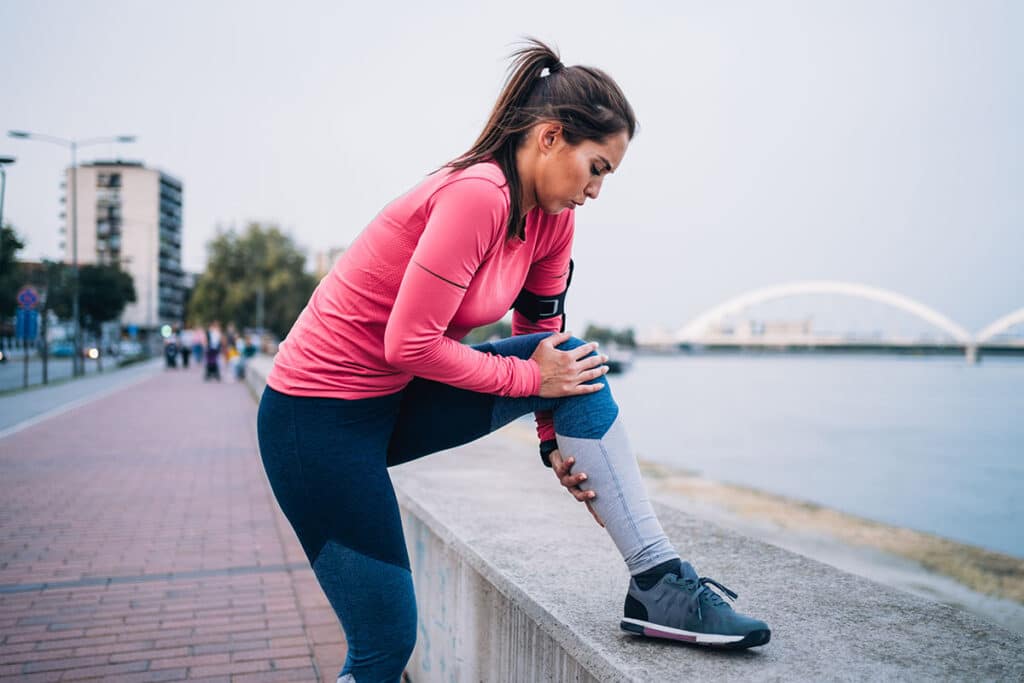
Have you recently felt a sharp pain in the back of your leg? Do you find it difficult to walk or put pressure on your feet? You might have experienced a calf strain, a common injury that can be caused by overuse, sudden movement, or muscular imbalances. While calf strain symptoms can vary in intensity, it’s crucial to receive a proper diagnosis and treatment to avoid further damage and complications. In this blog post, we’ll explore the most common calf strain symptoms, and share tips on getting chiropractor and physiotherapy treatment to help you recover as quickly and safely as possible.
Pain and Tenderness: The most noticeable symptom of a calf strain is pain or tenderness in the lower back of your leg. The pain can range from mild to severe and may be felt when you touch the affected area, or try to move your foot or ankle. In some cases, the pain can radiate up to your knee, making it difficult to bend or straighten your leg.
Swelling and Bruising: Another sign of calf strain symptoms is swelling and bruising around the affected area. The swelling could be due to inflammation or internal bleeding and might make it difficult to wear shoes or stand for long periods of time. Bruises can appear if the muscles are torn or stretched and usually show up within a few hours or days after the injury.
Limited Range of Motion: Calf strain can cause limited motion in your leg, making it hard to walk, climb stairs, or engage in physical activities. You might feel a tightness or stiffness in your calf muscles, preventing you from flexing or extending your foot. This symptom can also cause imbalances in your gait, leading to more strain on other muscles and joints.
Muscle Weakness: Along with pain and limited mobility, calf strain symptoms can also include muscle weakness in your calf. This can make it difficult to stand on your toes or push off your foot when walking. Weakness in your calf muscles can also affect your balance and stability, increasing the risk of falls and further injuries.
Chiropractic and Physiotherapy Treatment: If you suspect that you have a calf strain, it’s important to seek professional help from a chiropractor or physiotherapist. Both disciplines can provide hands-on treatment, tailored exercises, and pain relief techniques to help you recover faster and prevent future injuries. A chiropractor can use manual adjustments to align your spine and remove any pressure or tension on your nerves. They can also use soft tissue modalities, such as massage therapy or trigger point techniques, to release any knots or tightness in your calves. A physiotherapist can create an individualized exercise plan to strengthen your calf muscles, improve your flexibility, and enhance your balance and coordination. They can also recommend ice, heat, or electrical stimulation, depending on your needs.
Calf strain symptoms can be a painful and limiting injury, but with proper diagnosis and treatment, you can recover and resume your daily activities. If you experience any of the symptoms mentioned in this post, make sure to seek help from a licensed healthcare provider, such as a chiropractor or physiotherapist. With personalized care and ongoing support, you can reduce your pain, improve your mobility, and prevent future injuries. Remember to always listen to your body, and take the necessary steps to maintain your physical health and wellness.
If you have any questions or would like to explore further, please book a free, no-charge online appointment with either myself, Nitin Nair, BPT, R/TRO DIP, PT, or another Kitchener physiotherapy practitioner at CARESPACE. We are happy to listen and are here to help!

